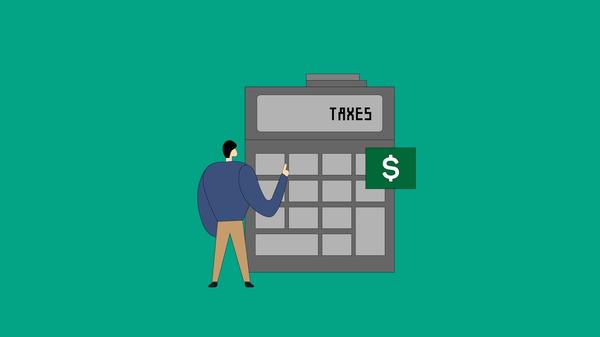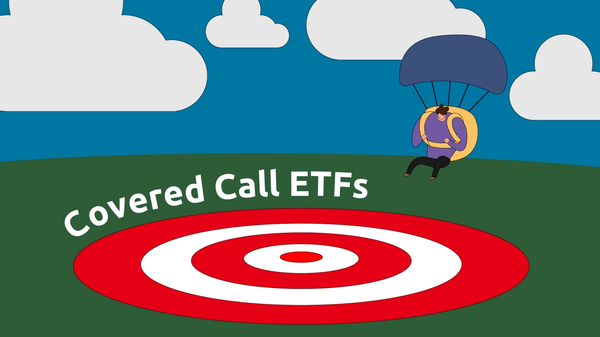This post was contributed to by Harvest ETFs, one of the largest covered call ETF providers in Canada, and a leader in covered call ETFs.
Covered call ETFs generate income for unitholders from a portfolio of securities with a covered call option writing strategy. Harvest launched its first ETFs in 2016, and quickly established itself as one of the top option writing firms in Canada. Their portfolio management team uses an active and flexible call option strategy to build high-yield ETFs that pay monthly distributions and still capture the opportunity for market growth.
The benefits of an active and flexible covered call strategy
Back in 2023, there were discussions why covered call strategies had increasingly captured the attention of investors and professional asset managers. Core inflation may have abated over the past year, but Canadians are still feeling the pinch from high prices and the highest interest rates since the early 2000s. Investors who are hungry for steady cashflow to mitigate the pinch of high prices and interest rates may want to consider gaining exposure to an active covered call strategy.
Some portfolio managers utilize an active and flexible covered call option writing strategy. How do they achieve this?
A key dynamic of call option ETFs involves the trade-off between income generation and the portfolio’s exposure to market growth opportunity. Indeed, writing options on a higher percentage of the portfolio means it is less exposed to market growth. On the other hand, it allows the ETF to generate consistently high monthly distributions.
Creative ETF manufacturers, Harvest ETFs being a leader among them, follow an actively managed strategy that provides portfolio managers with flexibility regarding selling call options. For example, in Harvest's equity-income based ETFs, they cap call option sales at 33% of holdings. However, for their fixed income ETF suite, they can utilize the full 100% limit rate.
The use of up 100% covered call enables these ETFs to generate higher premiums and, consequently, higher cash distribution, relatively to their underlying holdings.
A new suite of fixed income ETFs
New kinds of covered call ETFs have been hitting the market recently.
In September 2023, Harvest ETFs launched the Harvest Premium Yield Treasury ETF (HPYT:TSX), its first fixed income ETF. HPYT is a portfolio of ETFs that provides exposure to longer dated US Treasury bonds that are secured by the full faith and credit of the US government. It’s one of two fixed income ETFs at Harvest that employs up to 100% covered call writing to generate a higher yield and maximize monthly cash flow. Its risk rating is low to medium, and it sits on the long end of the maturity spectrum.
More recently in January 2024, Harvest introduced a full fixed income ETF suite. This suite covers the major segments of the maturity spectrum: short, medium, and long-duration fixed income.
The Harvest Premium Yield 7-10 Year Treasury ETF (HPYM:TSX), included in the January 2024 launch, seeks to provide attractive and tax efficient monthly cash distributions to unitholders by writing covered calls on a portfolio of US Treasury ETFs, that primarily hold mid-duration U.S. bonds with average maturities of 7-10 years. It’s the second ETF in the lineup that uses up 100% covered call to generate higher cash flow. Its risk rating is low to medium, and it is situated in the middle of the maturity spectrum.
Harvest Canadian T-Bill ETF (TBIL:TSX) sits on short end of the maturity spectrum and is designed as a low-risk cash vehicle that pays competitive interest income that comes from investing in Treasury Bills (“T-Bills”) issued by the Government of Canada.
Canadian investors who are hungry for cash flow from exposure to safe high-quality bonds in the current inflation and interest rate environment may want to consider covered call ETFs, such as Harvest's suite of fixed income ETFs, and find the one that’s right for their needs. These ETFs provide investors with three options:
1. Play long duration and pursue higher monthly cashflow with expected higher volatility (such as with HPYT)
2. Seek exposure to a “happy medium” of high monthly cash distribution with expected lower volatility (such as with HPYM)
3. Aim for a cash proxy (such as with TBIL), as an ultra-low or no volatility vehicle.
Equity income ETFs possess a strong track record
For investors who want monthly cashflow offered by a covered call writing strategy, along with the potential for capital growth, they may want to consider equity income ETFs.
Let’s take a quick look at a couple of examples, again from Harvest:
The Harvest Healthcare Leaders Income ETF (HHL:TSX) offers steady income and growth opportunities from large-cap US healthcare leaders like Eli Lilly and Merck & Co. HHL is Canada’s largest healthcare ETF with approximately C$1.5 billion in assets under management (AUM). Moreover, it has established itself as a top performing Canadian healthcare ETF on an annualized basis over a one, two, three, and four-year period.
HHL has paid out over $400 million in distributions since inception. It last paid out a monthly distribution of $0.0583 per unit. That represents a current yield of 8.22% as at February 26, 2024. For clarity this is not a historical performance but represents the yield an investor would receive if the distributions were the same for the next 12 months and the ETF was purchased at a price of $8.51. This ETF has risk rating of medium.
The Harvest Tech Achievers Growth & Income ETF (HTA:TSX) holds leading companies that seek to deliver both income and the growth opportunities investors seek in technology. In 2023, HTA.U won an LSEG Lipper Award for Best Sector Equity Fund Over 5 Years. This ETF has delivered annualized growth of 15% as January 31, 2024, from inception. It has also increased its monthly distribution rate three consecutive years (2021, 2022, and 2023). HTA last paid out a monthly distribution of $0.1200 per unit, which represents a current yield of 8.10% as at February 26, 2024. For clarity this is not a historical performance but represents the yield an investor would receive if the distributions were the same for the next 12 months and the ETF was purchased at a price of $17.78. This ETF has risk rating of medium to high,
Conclusion
In sum, Covered call ETFs generate income for unitholders from a portfolio of securities with a covered call option writing strategy. Harvest is among the leaders in the space. In sum, Canadian investors who are hungry for cash flow from exposure to safe high-quality bonds in the current inflation and interest rate environment may want to consider Harvest ETFs’ suite of fixed income ETFs and find the one that’s right for their needs.
Disclaimer:
Commissions, management fees and expenses all may be associated with investing in Harvest Exchange Traded Funds (managed by Harvest Portfolios Group Inc.). Please read the relevant prospectus before investing. The funds are not guaranteed, their values change frequently, and past performance may not be repeated. The content of this article is to inform and educate and therefore should not be taken as investment, tax, or financial advice.


